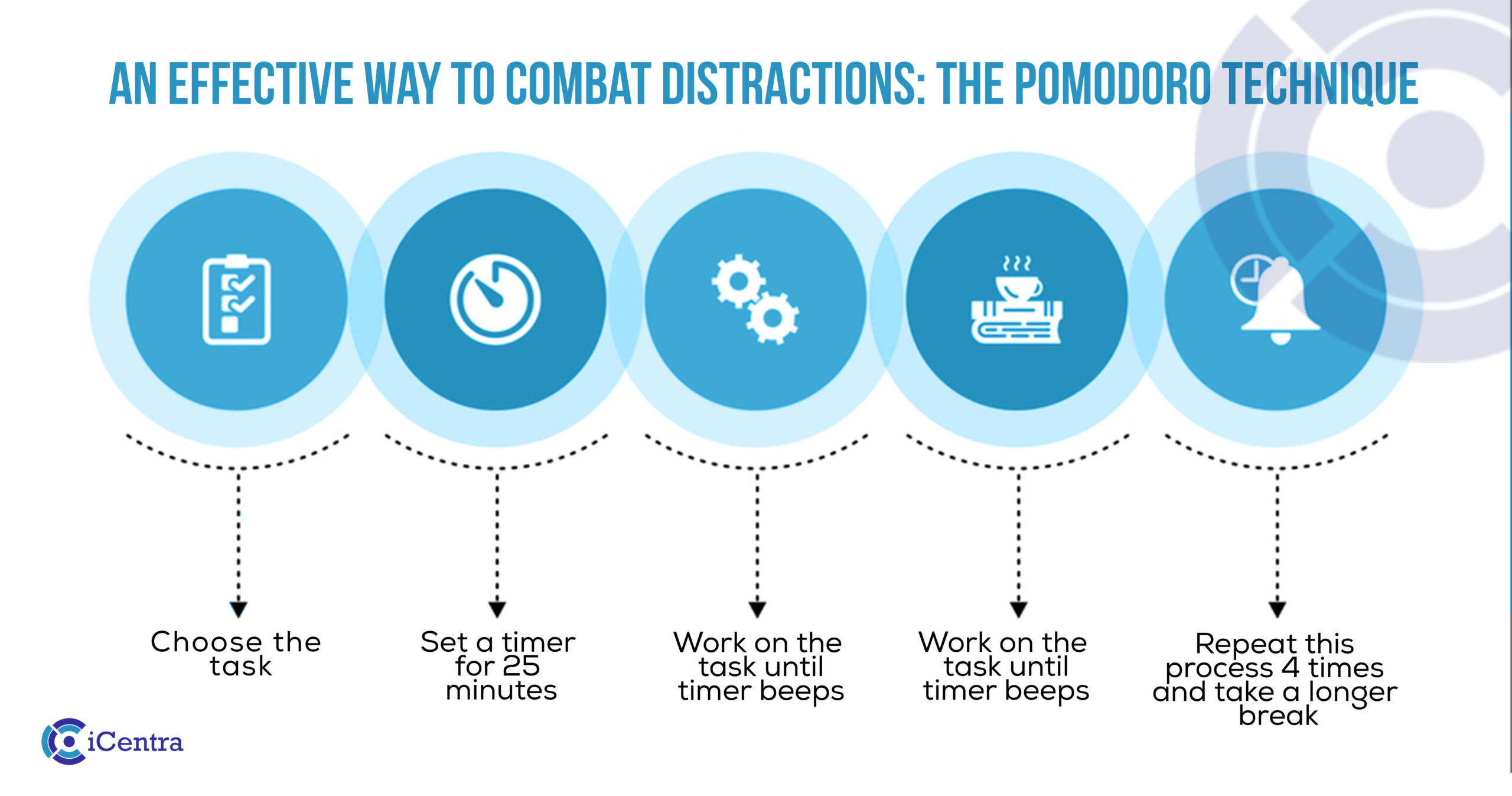| The Pomodoro Technique was developed in the late 1980s by a student University of Francesco named Cirillo. Cirillo was struggling to focus on his studies and complete assignments. Feeling overwhelmed, he asked himself to commit to just 10 minutes of focused study time. Encouraged by the challenge, he found a tomato (pomodoro in Italian) shaped kitchen timer, and the Pomodoro technique was born.However, Cirillo went on to write a 130 paged book about the Pomodoro method. Here simplify the technique and show you how to use it to better your focus.
1. Get a to-do list and a timer. 2. Set your timer for 25 minutes, and focus on a single task until the timer rings. 3. When your session ends, mark off one Pomodoro and record what you completed. 4. Then enjoy a five-minute break. 5. After four Pomodoros, take a longer, more restorative 15–30-minute break. Though the 25-minute work sprint is the core of the Pomodoro technique. We would speak to this technique further by stating the three rules for getting the most out of each practice. 1. Break down complex projects: If a task requires more than four Pomodoros, it needs to be divided into smaller, actionable steps. Sticking to this rule will help ensure you make clear progress on your projects. 2. Small tasks go together: Any tasks that will take less than one Pomodoro should be combined with other simple tasks. For example, “write an invoice,” “set spa appointment,” and “read Pomodoro article” could go together in one session. 3. Once a Pomodoro is set, it must ring: The Pomodoro is an indivisible unit of time and can not be broken, especially not to check incoming emails, team chats, or do anything unrelated to the task you are working on. Any ideas, tasks, or requests that come up should be taken note of to come back to later. A digital task manager like Google To do is a great place for these, but pen and paper will work as effectively. If an unavoidable disruption occurs, then take your five-minute break and start afresh. Cirillo recommends that you track interruptions (internal or external) as they occur and reflect on how to avoid them in your next session. The rule applies even if you do finish your given task before the timer goes off. Use the rest of your time to practice overlearning, and improving skills. For example, you could spend extra time researching networking opportunities or reading industry expert journals. If all of these seem simple and easy to do, I ensure you it is. I look forward to hearing your feedback on the Pomodoro technique. If you found this helpful, please like, share, and comment.
|
Tags:
What do you think?
Related Insights
As organizations strive for agility, efficiency, and innovation, integrating technology into Project Resourcing processes has
Organizational transformation is a fundamental process that many businesses undergo to adapt to changing market
Project management is a constantly evolving field that requires a lot of adaptability and efficiency.




